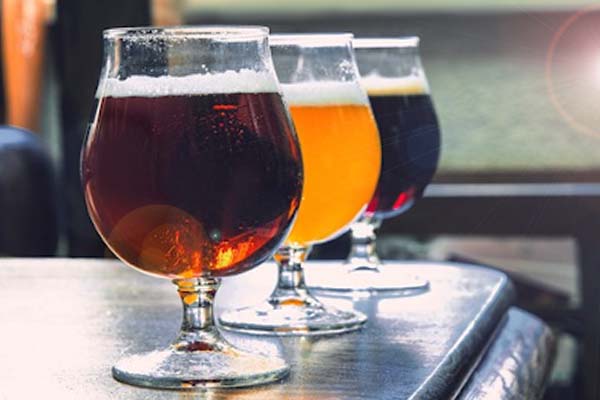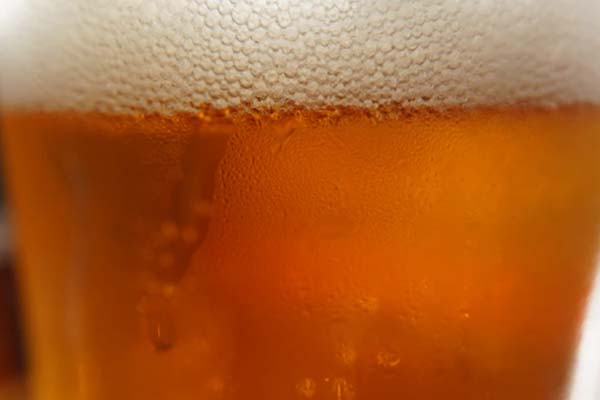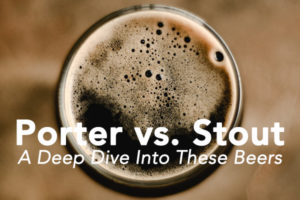Crisp, clean, and comforting. This is how both lager and pilsner are always described. Unsurprisingly, they’re also the bases to the world’s most popular beer brands today.
But pubs and breweries often use the two names interchangeably that it got us all wondering, are lager and pilsner the same, after all?
If not, how do the pilsners differ from the lager?
You can’t call yourself a beer junkie without knowing the answer to that!
So put your feet up and crack a cold one.
Let’s dive deeper into it.
What Is Lager?
Being the world’s most widely consumed type of beer, it’s impossible not to see one in groceries or even in the convenience store nearest you.
Lager is so popular that some people are even drinking it without knowing that it’s called a lager.
But despite its household name status, lager is actually not a very ancient type of beer.
The first recorded appearance of this unique kind of brew was in the 1400s when monks discovered and perfected a brewing process that’s different from the usual beer brewing process people used to do.
So how is it different from the usual?
While ales are brewed with a strain of yeast that feeds on top of the beer and thrives in warmer temperature, the lager yeast, called Saccharomyces pastorianus, feeds on the bottom of the fermentor and comes alive in a cooler temperature of around 40 to 50 degrees Fahrenheit. This caused the early lager brewers (the Germans) to develop a fermentation and maturation process that’s different from the rest. It’s called lagering, from the German word lager which means storage.

Lagering is simply cold-storing the beer for its fermentation away from heat and the sun. In much earlier times, lagering was done in caves or dug-up cellars with ice from a nearby lake.
These two qualities- the bottom fermenting strain of yeast and cold storage- are unique only to the lager as most beers are fermented with the usual type of yeast and in warm conditions.
Lager varies greatly in color, body, bitterness, and alcohol content.
Are you interested brewing your own beer?
If so, click the button below to read our in-depth review article of our favorite 10 all-in-one electric brewing systems for home brewers.
Some of the most popular lager names are Oktoberfest Amber Lager, Sam Adams Winter Lager, Märzen, Carling, Budweiser, and Heineken while the most popular lager styles are Bock, Dunzel, Schwarzbier, dark lager, and the pilsner.
Yes, the pilsner, and that leads us to…
What Is Pilsner?
While pilsner may sound and appear very independent from the lager, pilsner is actually just a type of lager beer…
…albeit, a very popular and much-loved one at that.
As was mentioned earlier, lager isn’t a very ancient type of beverage, originating only in the middle ages and that means that the pilsner is much younger than that.
The fact that the pilsner is a type of lager means that it also uses the Saccharomyces pastorianus or the bottom feeding strain of yeast that ferments in lower temperatures.
So how did the pilsner come about?
First discovered in the 1400s, the Europeans enjoyed their lager for about 400 more years before realizing they’d had enough of the nasty and skunky semi-spoiled beer.
So in 1838, the people of the city of Pilzen (Plzen) threw a mass tantrum by dumping their barrels of lager in the streets to express their dissatisfaction.
The city officials were quick to action and soon, a city brewery was founded. This brewery is what we now know as the Pilsner Urquell brand.
The city-commissioned Bavarian brewer named Josef Groll took the lager recipe and process and improved it by adding the local Saaz hops and using soft water instead of the usual hard or mineralized water.
Because of this, there were less minerals to interact with the yeast and alcohol, and along with the noble Saaz hops, the result was a mildly hopped flavor with a spicy touch that’s to be called a pilsner.
It’s an instant hit with the Bohemians and it didn’t hurt that its light golden color was very attractive, too!Some of the most popular pilsner names are the König Brauerei König Pilsener, Classic American Pilsner, Victoria Prima, and of course, the Pilsner Urquell.

Difference Between Large And Pilsner:
Alcohol Content (ABV) in Lager and Pilsner
Lager is a collective name for all bottom fermented types of beers. A lager’s alcohol content ranges from alcohol-free to about 10% at most.
But if you base its average alcohol content from the most popular and commercially available lager brands, it ranges from 2.8% to 4.2%.
On the other hand…
Most pilsner brands on the market have a range of 4.4% to 5.5% alcohol content, much stronger than lager.
That’s the reason why most beer newbies prefer to drink lager first and only familiarize themselves with pilsner just after getting comfortable with its much milder predecessor.
Popularity and Cost of Lager and Pilsner
Between the lager and the pilsner, lager still remains as the more popular among the two, or among all beer types, rather.
Beer enthusiasts attribute this popularity to the lager’s much milder and beginner-friendly taste compared to the much spicier and stronger pilsner.
That being said, pilsner is more popular in countries with high beer consumption rates such as Germany, Russia. Czech Republic, and Australia while lager is more popular is America, Africa, and Asia.
As countries vary by economic conditions, some beer brands can have very different prices in different countries and regions.
Aroma and Flavor in Lager and Pilsner
There’s a reason why no pilsner ever tastes like regular lager, and that’s because of the kind and amount of spices used for the pilsner.
And by spices, I mean no other than the noble saaz hops.
Now, we know that beers naturally use hops for an extra dimension of flavor. But using saaz hops took the lager to the next level.
As a result, the pilsner is bolder and spicier, thanks to the saaz hops’ flavor. But it’s not a hot kind of spicy. It’s more like “pumpkin spice” spicy. It’s more aromatic too whereas the good ole’ lager has a flavor profile that’s milder, simpler, and with a lighter backbone, making it a favorite among the amateurs.
Appearance and Color of Lager and Pilsner
For complete beginners, it is the color that’s usually the first deciding factor in distinguishing whether a beer is a lager or a pilsner, although it can still be very hard to tell.
While the pilsner is mostly consistently golden in color, the lager,with all its varieties, has a color that ranges from very pale yellow to amber and dark brown.
Fermentation process in Lager and Pilsner
As the pilsner is also a subcategory of lager, it’s done by bottom fermenting the lager yeast strains in cooler temperatures.
So what’s the difference between a pilsner and a lager’s fermentation process?
The stronger noble saaz hops are used for pilsner along with soft water that results in a crisper and clearer beer with a stronger taste and aroma.
Table illustrating Differences Between Pilsner And Large:
| Lager | Pilsner | |
| Alcohol content | 2.8%-4.2% ABV | 4.4%-5.5% abv |
| Popularity and cost | More popular in countries in Asia, parts of Africa, and America. | Popular in countries with high consumption rates such as Russia, Germany, Czech Republic, and Australia. |
| Aroma and flavor | Mild, crisp, light, and sometimes sweet, depending on the lager type | Stronger hoppy flavor with a spicy kick |
| Appearance and color | Lager has a wide range of colors, from pale lager yellow to amber and dark brown with very thin to no head foam | Light to vivid golden in color, the pilsner is topped with a thicker head foam. |
| Fermentation process | Fermented using bottom fermenting yeast in cool temperatures | Bottom-fermented as well but with the addition of Saaz hops and soft water instead of the usual hard or mineralized water. |
Conclusion
To wrap it up, pilsner beer is just a type of lager just as lager is a type of a beer style.
Yep, get that.
Both use lager yeasts that feed at the bottom of the fermentor in cooler temperatures compared to the usual yeast that thrive in warm or room temperature for most beer types.
Aside from the hue, which can range from light, to dark to an amber color, the two also differ greatly in taste so it’s actually not that very hard to distinguish one from the other.
While most beer drinkers are forever captivated by the punch of pilsner, the general crowd and the amateurs still prefer the straightforward crispiness of the lager.
What do you prefer? Lager or Pilsen? What’s the best brand out there for you?
Let me know on our social media and let’s chat!




